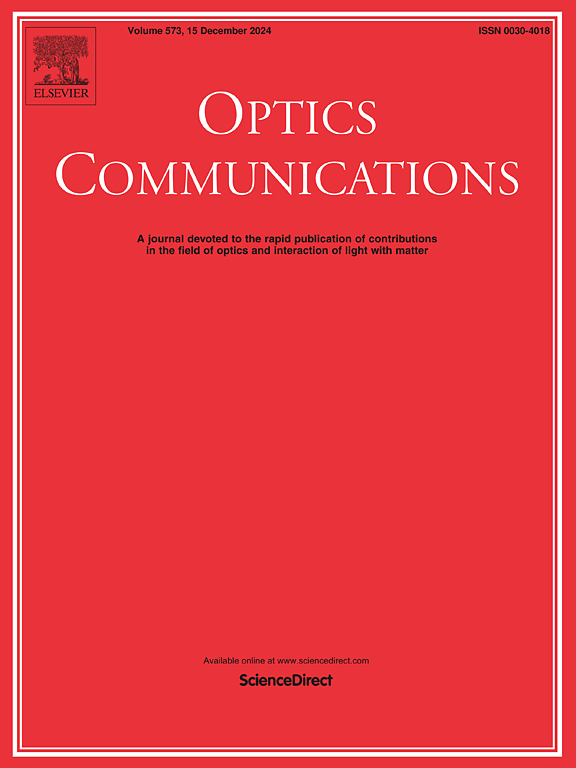Investigation of ultrasmall sidewall-insulated GaN via with large aspect ratio for the strategy of vertically stacked full-color Micro-LEDs
IF 2.5
3区 物理与天体物理
Q2 OPTICS
引用次数: 0
Abstract
Micro light-emitting diode (Micro-LED) is considered as an ideal candidate for near-eye, outdoor display, and light field photography applications. At present, the commercialization of full-color Micro-LED is limited by the mass transfer of red, green, and blue (R-B-G) sub-pixels. Hence, we proposed a full-color scheme of vertically stacked tricolor Micro-LED layers to avoid mass transfer, which owns over 1000 PPI (pixel per inch). In this solution, the sidewall-insulated via in the epilayer plays a critical role to achieve the electrical and mechanical integration of three monochromatic Micro-LEDs with Si-based complementary metal-oxide semiconductor (CMOS) driver. Therefore, the via processes of GaN-based epilayer were investigated systematically using available semiconductor processes in this article. The inductively coupled plasma (ICP) etching was employed to create the ultra-small micro-structure array using SiO2 thin film as hard mask. Sidewall-insulated vias were fabricated with different aperture sizes (9.3, 7.5, and 3.4 μm) and a depth of about 4-μm. The vias with large aspect ratio are completely satisfy the requirement of designed vertical interconnection. This study aims to provide valuable reference for the commercial progress of high-resolution and full-color Micro-LEDs.
研究具有大纵横比的超小型侧壁绝缘氮化镓通孔,以实现垂直堆叠全彩 Micro-LED 战略
微型发光二极管(Micro-LED)被认为是近眼、户外显示和光场摄影应用的理想选择。目前,全彩 Micro-LED 的商业化受到红、绿、蓝(R-B-G)子像素质量转移的限制。因此,我们提出了一种由垂直堆叠的三色 Micro-LED 层组成的全彩方案,以避免质量转移,该方案拥有超过 1000 PPI(每英寸像素)。在这一方案中,外延层中的侧壁绝缘通孔对于实现三个单色 Micro-LED 与硅基互补金属氧化物半导体(CMOS)驱动器的电气和机械集成起着关键作用。因此,本文利用现有的半导体工艺系统地研究了氮化镓基外延层的通孔工艺。采用电感耦合等离子体(ICP)蚀刻法,以二氧化硅薄膜作为硬掩膜,创建超小型微结构阵列。制作的侧壁绝缘通孔具有不同的孔径大小(9.3、7.5 和 3.4 μm),深度约为 4-μm。大纵横比的通孔完全满足垂直互连设计的要求。这项研究旨在为高分辨率和全彩 Micro-LED 的商业化进程提供有价值的参考。
本文章由计算机程序翻译,如有差异,请以英文原文为准。
求助全文
约1分钟内获得全文
求助全文
来源期刊

Optics Communications
物理-光学
CiteScore
5.10
自引率
8.30%
发文量
681
审稿时长
38 days
期刊介绍:
Optics Communications invites original and timely contributions containing new results in various fields of optics and photonics. The journal considers theoretical and experimental research in areas ranging from the fundamental properties of light to technological applications. Topics covered include classical and quantum optics, optical physics and light-matter interactions, lasers, imaging, guided-wave optics and optical information processing. Manuscripts should offer clear evidence of novelty and significance. Papers concentrating on mathematical and computational issues, with limited connection to optics, are not suitable for publication in the Journal. Similarly, small technical advances, or papers concerned only with engineering applications or issues of materials science fall outside the journal scope.
 求助内容:
求助内容: 应助结果提醒方式:
应助结果提醒方式:


